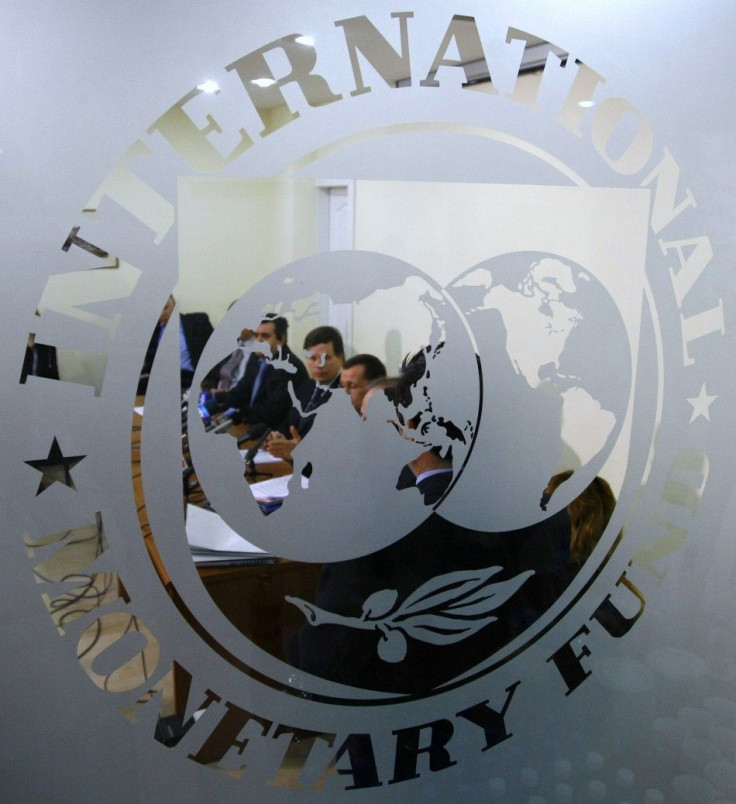IMF Increases US Economic Growth Forecast

The International Monetary Fund on Tuesday raised its projection of growth in the U.S. gross domestic product to 2.1 percent this year and 2.4 percent next year, from 1.7 percent in 2011.
The forecast, included in the IMF's April 2012 World Economic Outlook, also included a slight improvement in its outlook for the euro zone compared to its January forecast, though it still sees a mild contraction on concerns about high sovereign debt and fiscal consolidation.
Besides economic growth of 2.1 percent in the U.S. this year, the IMF also forecast a 2.5 percent growth next year for North America, reflecting ongoing fiscal consolidation and continued weakness in housing prices. In Canada, growth will moderate slightly to close to 2 percent, the agency said in a statement.
In the 17-nation euro zone, the IMF expects real GDP to contract in the first half of this year but then start recovering -- except in debt-choked Spain, Italy, Greece, and Portugal where recovery will only begin in 2013.
Many advanced economies outside the euro area avoided large pre-crisis imbalances, which helped cushion the spillovers from the euro area, the IMF said.
But in the United Kingdom, whose financial sector was hit hard by the global crisis, growth will be weak in early 2012. Growth in emerging Europe is projected to slow sharply to 1.9 percent this year, reflecting its strong economic and financial linkages with the euro area. Europe as a whole will see projected growth of 0.2 percent in 2012 and 1.4 percent next year.
Japan, bouncing back from last year's destructive earthquake and tsunami, will see a recovery of 2 percent.
Overall, global growth is projected to drop from close to 4 percent in 2011 to about 3.5 percent this year, picking up to 4.1 percent next year.
For the past six months we've been on a rollercoaster ride, said IMF Chief Economist Olivier Blanchard. Our baseline is that growth is going to be slow in advanced economies; sustained, but not great, in emerging market and developing economies. But the risk of things turning bad again in Europe is high.
The IMF also released other regional forecasts:
• Asia. Weaker external demand has dimmed the outlook for Asia, the IMF said. But resilient domestic demand in China, limited financial spillovers, room for policy easing and the capacity of Asian banks to step in as European banks deleverage suggest that the soft landing under way is likely to continue. Overall, growth in Asia will average 6 percent, with China slowing to 8.2 percent and India to 6.9 percent.
• Russia and Commonwealth of Independent States. Weaker exports to Europe and policy tightening in some economies will moderate growth this year, even though commodity prices will remain high. Overall growth this year will fall to 4.2 percent.
• Latin America and the Caribbean. Growth is projected to moderate to 3.75 percent this year before recovering above 4 percent in 2013. Overheating risks have receded but could re-emerge if capital flows increase, putting exchange rates under pressure.
• Middle East and North Africa. Growth in the region's oil importers will be constrained by strong oil prices, anemic tourism associated with the social unrest in the region, and lower trade and remittance flows reflecting the ongoing problems in Europe. Among oil exporters, negative developments in Iran are projected to be offset by increased oil production in Iraq and Saudi Arabia and a bounce back in Libya. Overall growth for the region is forecast at 4.2 percent this year, with oil producers buoyed by continued high oil prices, but inflation will average 9.5 percent.
• Sub-Saharan Africa. The pace of growth is projected to pick up this year to 5.4 percent, with the region relatively less exposed to the global slowdown but not immune to spillovers from the euro area's problems. South Africa, which has stronger trade and financial ties with slowing Europe, is struggling with subpar growth and high unemployment.
© Copyright IBTimes 2024. All rights reserved.




















